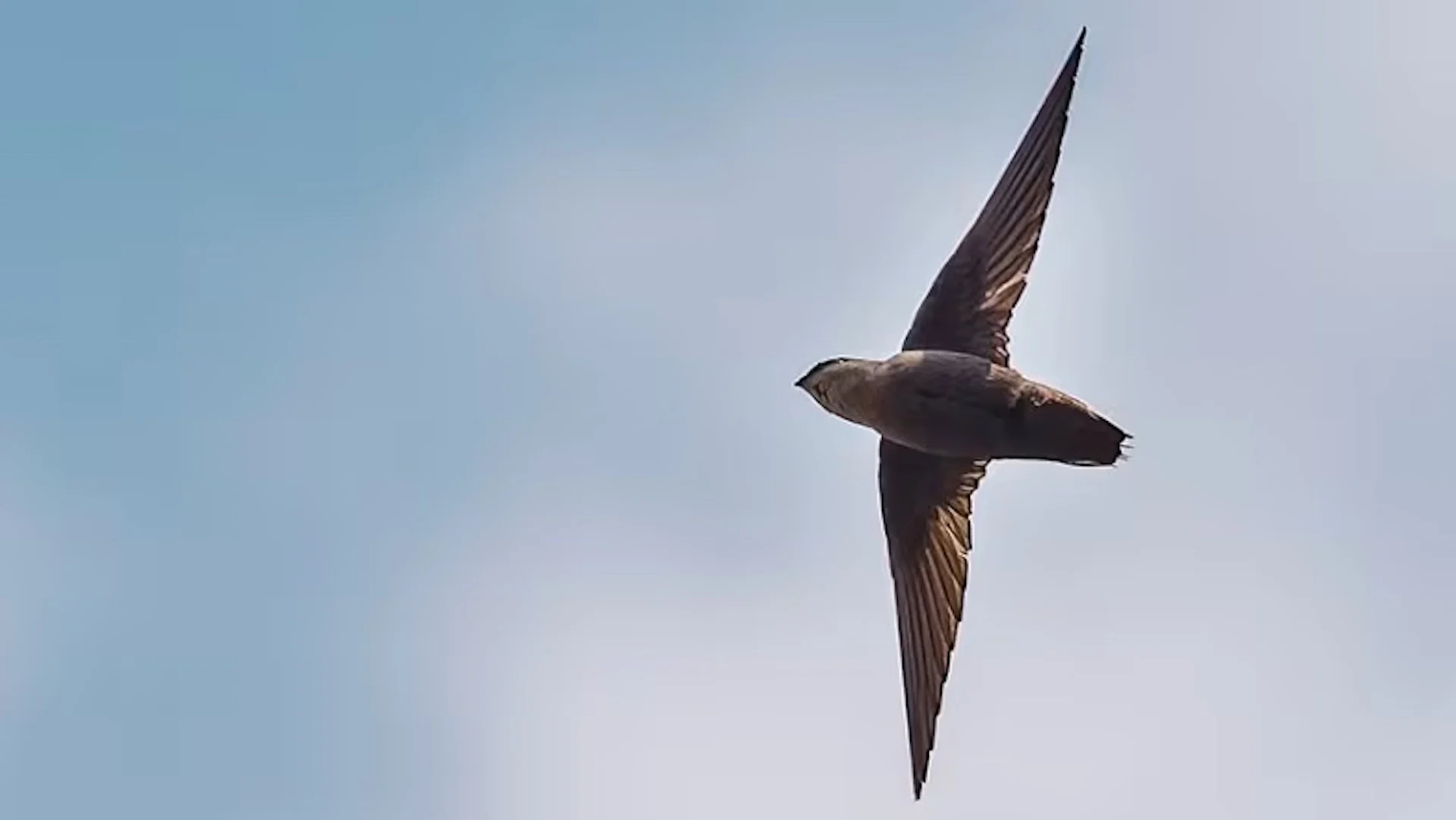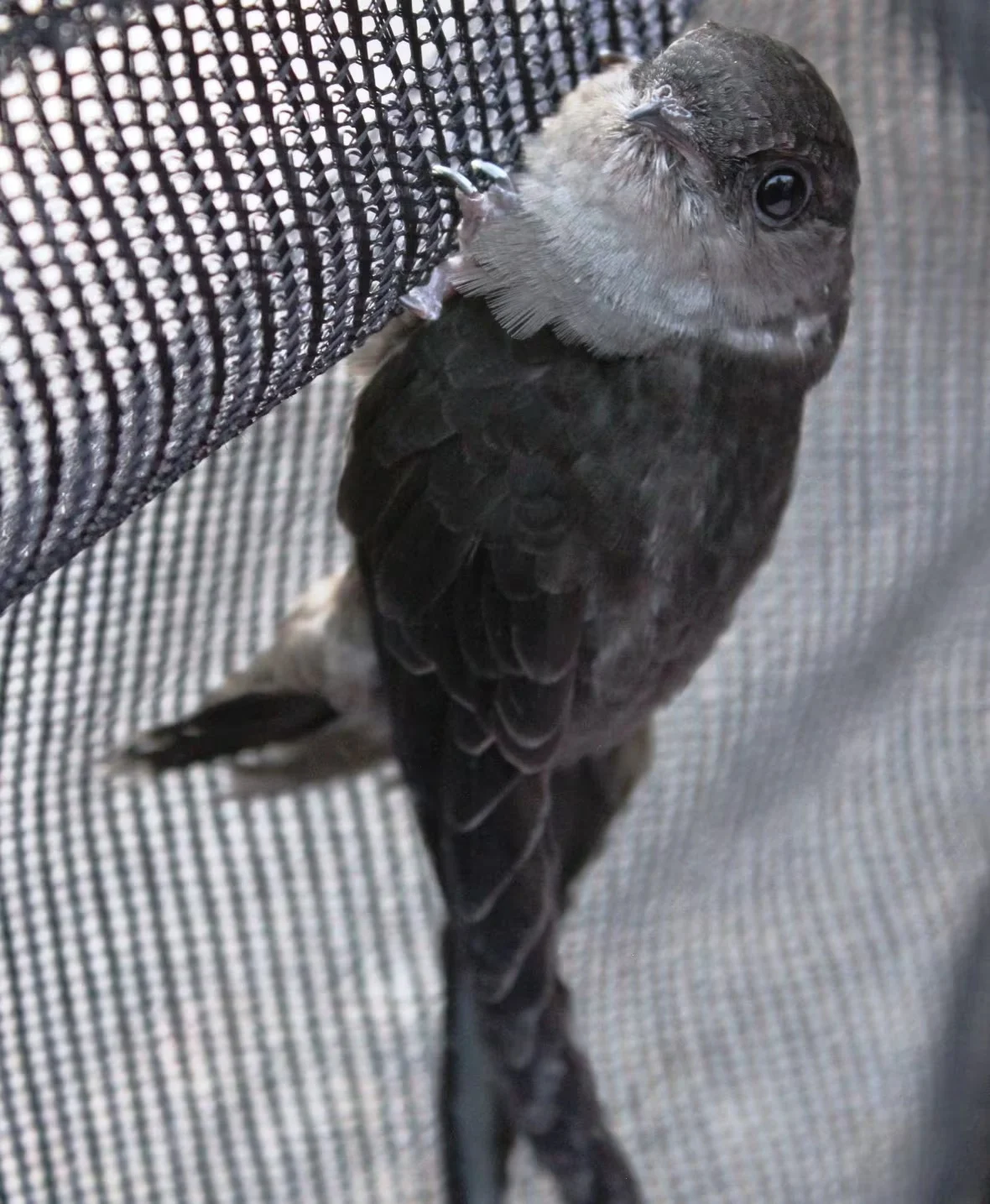
Swifts in the chimney: What to know about this threatened bird species
Since the beginning of spring this year, Gallery 78 on Queen Street in Fredericton has seen some unusual visitors, as about 14 birds have made their way inside the building, said staff member Sophie Theriault.
"It is an old building and we've dealt with some, you know, different things over the years, like some bats … So it does come with the territory," said Theriault.
"But there were a couple times where we'd see these kind of dark shapes, didn't really know what they were, and they were flying to and from different rooms. And then we discovered that they were chimney swifts."
The private art gallery has a large brick chimney, the perfect home for the birds.
SEE ALSO: See a swoop of swifts? Why a group of birders is trying to count them all
Theriault said each time one would come in, a co-worker would gently bring the bird outside. By the time the 10th or 11th bird came through, she said a man came in and told her he was looking outside and noticed chimney swifts.
He was part of SwiftWatch, a program by Birds Canada, and from there Theriault said the gallery started working with the group to find out what to do about the swifts coming in through the chimney.

Sophie Theriault, a staff member at Gallery 78, said the gallery looks forward to having the swifts come back to nest in their chimney every year. (Isabelle Leger/CBC)
Habitat history
Chimney swifts are unique when it comes to habitat says Graham Sorenson, the Atlantic aerial insectivore conservation program co-ordinator for Birds Canada.
"Historically, in North America, chimney swifts would have been breeding in large hollow trees," said Sorenson.
"As early settlers arrived and began clearing a lot of older forests that would have had these mature trees, and also at the same time [started] building towns with brick chimneys, chimney swifts lost their natural habitat and, pretty readily it seems, adapted to using chimneys."
Now, chimneys are their primary nesting spot, he said.

Graham Sorenson of Birds Canada recommends avoiding cleaning or using your chimney from May to August to avoid disturbing chimney swifts. (Submitted by Graham Sorenson)
Chimney swifts are built differently than most bird species, he said, because they're unable to perch on branches and can only cling to vertical surfaces.
The birds will collect one twig at a time in early June and fly it into a chimney, where they will use saliva to glue the twig to the wall, said Sorenson. They repeat this process until they have a small nest attached to the wall to lay their eggs in for summer.
Leave them be
Sorenson said it's actually not common for chimney swifts to venture inside buildings. But occasionally, if there are openings, especially in older chimneys, they might find a way out that looks like the way they came in.
If chimney swifts are nesting in your chimney, Sorenson said, it's best to leave them be.
"If you find swifts, first off, I think that's really awesome and you should be excited about it. They're really easy, quiet guests, as we like to say, and they provide a service of eating insects around your house."
Chimney swifts are a protected species and are considered threatened under the federal Species at Risk Act in Canada, he said.

Chimney swifts are built differently than most bird species, Sorenson said, because they’re unable to perch on branches and can only cling to vertical surfaces. (Allison Manthorne/Submitted by Graham Sorenson)
Sorenson recommends avoiding cleaning or using your chimney from May to August to avoid disturbing the birds or potentially smoking them out.
Theriault said when the birds first started coming into the gallery through the chimney, they considered capping it.
But the gallery's chimney is unique. It is still old brick, unlike some modern chimneys that have a metal liner on the inside that make it too difficult for swifts to grip.
Sorenson said that's one of the challenges with conserving the species. Fewer buildings are being built with brick chimneys and the new ones either have metal liners or caps built on them right away.
"This kind of habitat loss of chimneys is a challenge for chimney swifts and will be more of a challenge as the buildings that have these older chimneys continue to age," said Sorenson.
Now, after working with Birds Canada and learning what the birds have been using the chimney for, Theriault said the gallery has abandoned the idea of capping it.
She said they now love the idea of having the chimney swifts nesting in the gallery.
"[We would] love to work with them to make sure that they come back every year as a habitat."
WATCH: Avian flu spreading from birds into mammals, what you need to know
Thumbnail courtesy of Andrés Jimenez/Submitted by Graham Sorenson via CBC News.
The story was written by Hannah Rudderham and published for CBC News. It contains files from Shift.









